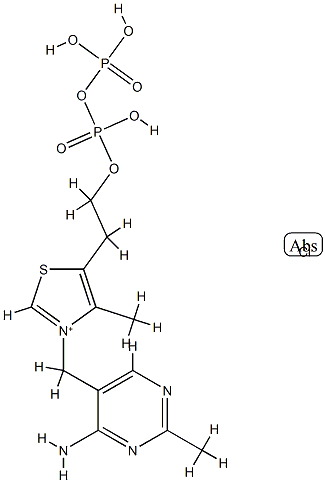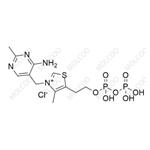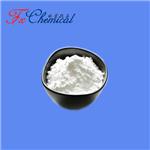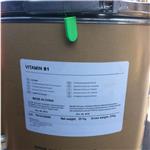
Cocarboxylase
- Product NameCocarboxylase
- CAS154-87-0
- CBNumberCB6326133
- MFC12H19ClN4O7P2S
- MW460.767382
- EINECS205-836-1
- MDL NumberMFCD00038740
- MOL File154-87-0.mol
- MSDS FileSDS
Chemical Properties
| Melting point | 240~241℃ |
| bulk density | 500kg/m3 |
| storage temp. | -20°C |
| solubility | H2O: soluble50mg/mL, clear to very slightly hazy, colorless |
| form | Solid |
| color | White to Off-White |
| PH | 1.0-1.4 (20°C, 100g/L in H2O) |
| Water Solubility | It is soluble in water. |
| BRN | 3875902 |
| Stability | Hygroscopic |
| InChI | InChI=1S/C12H18N4O7P2S.ClH/c1-8-11(3-4-22-25(20,21)23-24(17,18)19)26-7-16(8)6-10-5-14-9(2)15-12(10)13;/h5,7H,3-4,6H2,1-2H3,(H4-,13,14,15,17,18,19,20,21);1H |
| InChIKey | YXVCLPJQTZXJLH-UHFFFAOYSA-N |
| SMILES | [Cl-].S1C([H])=[N+](C([H])([H])C2=C([H])N=C(C([H])([H])[H])N=C2N([H])[H])C(C([H])([H])[H])=C1C([H])([H])C([H])([H])OP(=O)(O[H])OP(=O)(O[H])O[H] |
| CAS DataBase Reference | 154-87-0(CAS DataBase Reference) |
| FDA UNII | XMK8K8EVIU |
| EPA Substance Registry System | Thiazolium, 3-[(4-amino-2-methyl-5-pyrimidinyl)methyl]-4-methyl-5-(4,6,6-trihydroxy-4,6-dioxido-3,5-dioxa-4,6-diphosphahex-1-yl)-, chloride (154-87-0) |
| UNSPSC Code | 41116107 |
| NACRES | NA.54 |
Safety
| Symbol(GHS) |

|
| Signal word | Warning |
| Hazard statements | H317 |
| Precautionary statements | P261-P272-P280-P302+P352-P333+P313-P362+P364 |
| Safety Statements | 22-24/25 |
| RIDADR | 1759 |
| WGK Germany | 3 |
| RTECS | XI7552000 |
| F | 3-8-10 |
| TSCA | Yes |
| HazardClass | 8 |
| PackingGroup | III |
| HS Code | 29362200 |
| Toxicity | LD50 intramuscular in mouse: > 1gm/kg |



